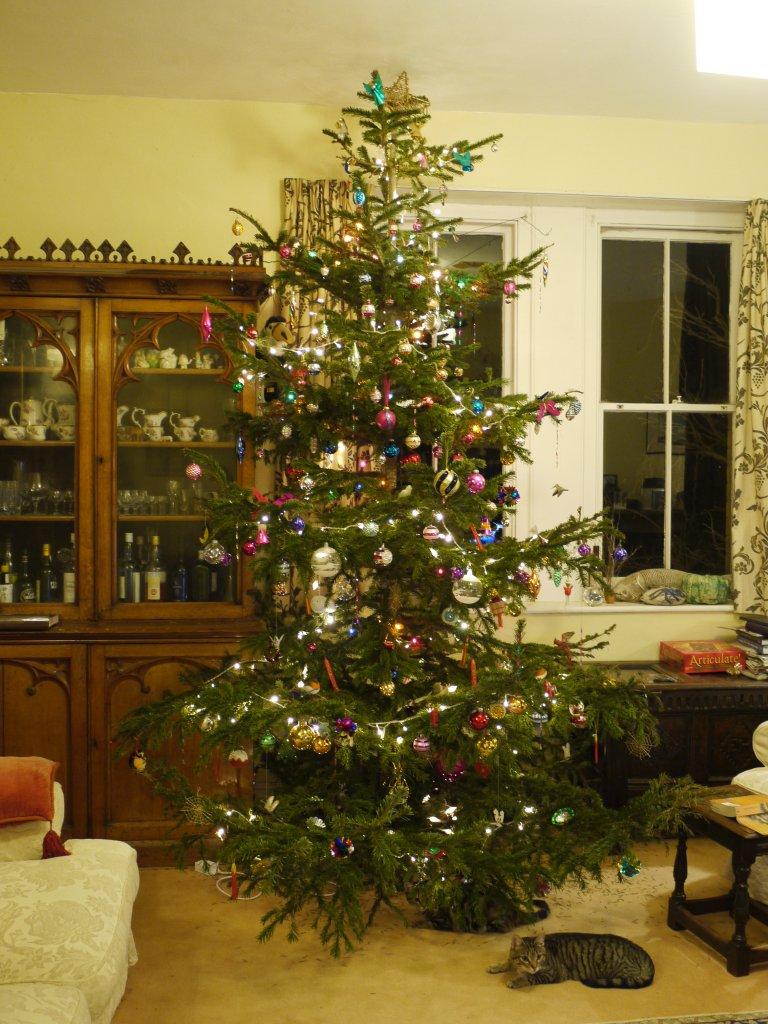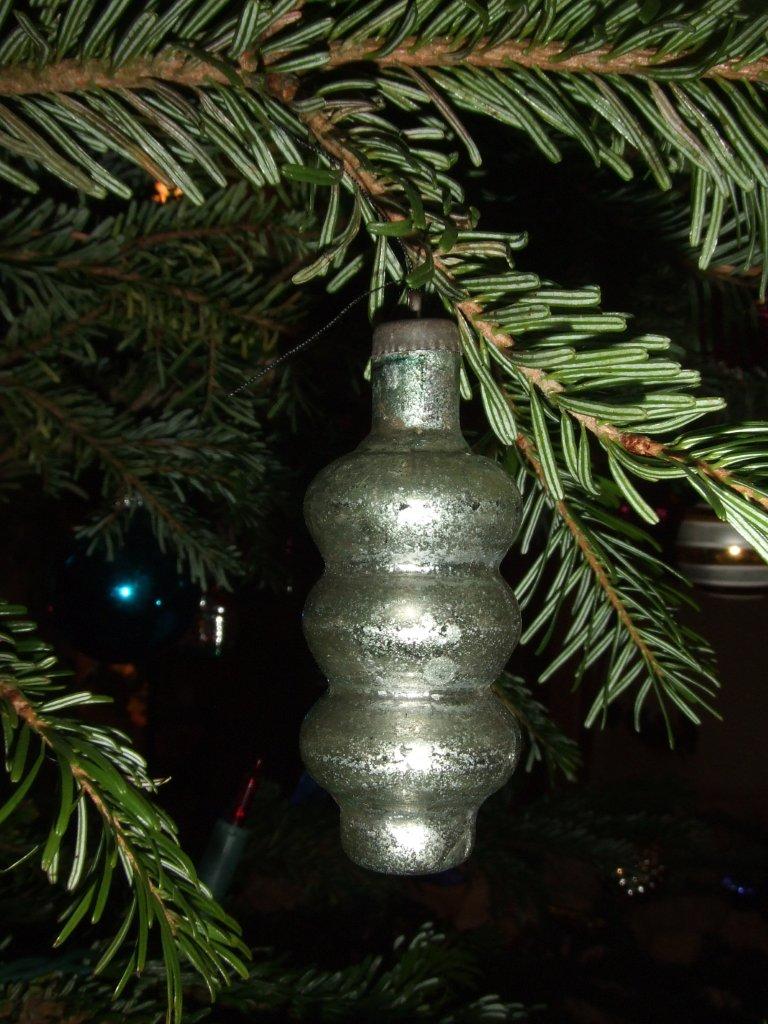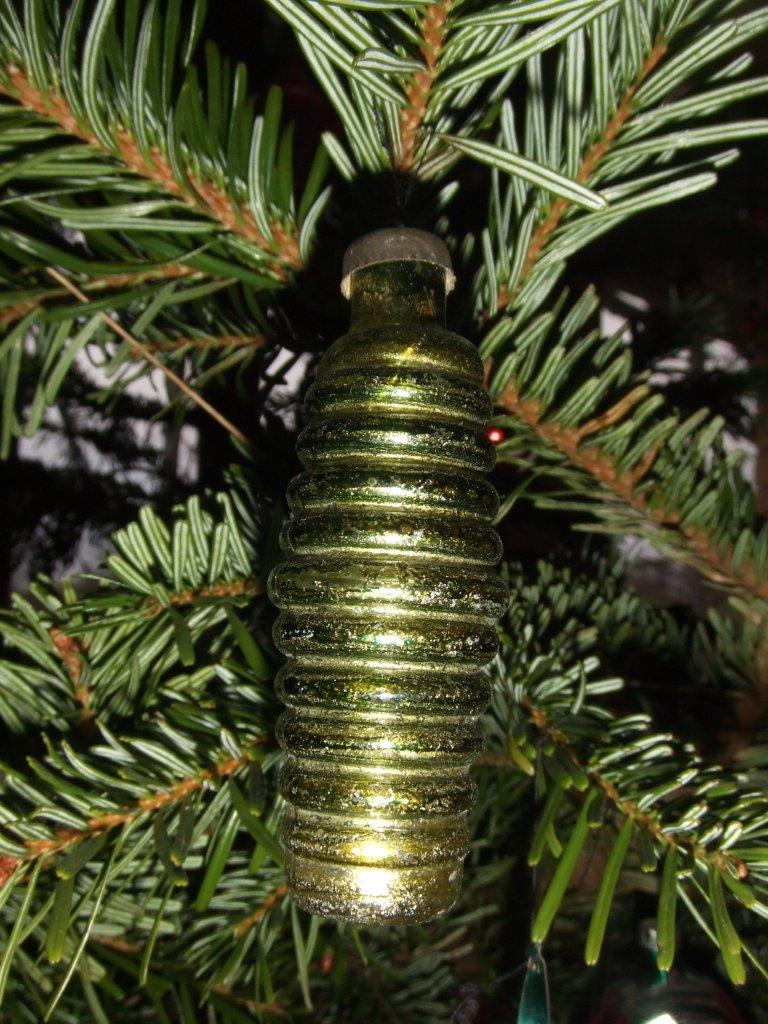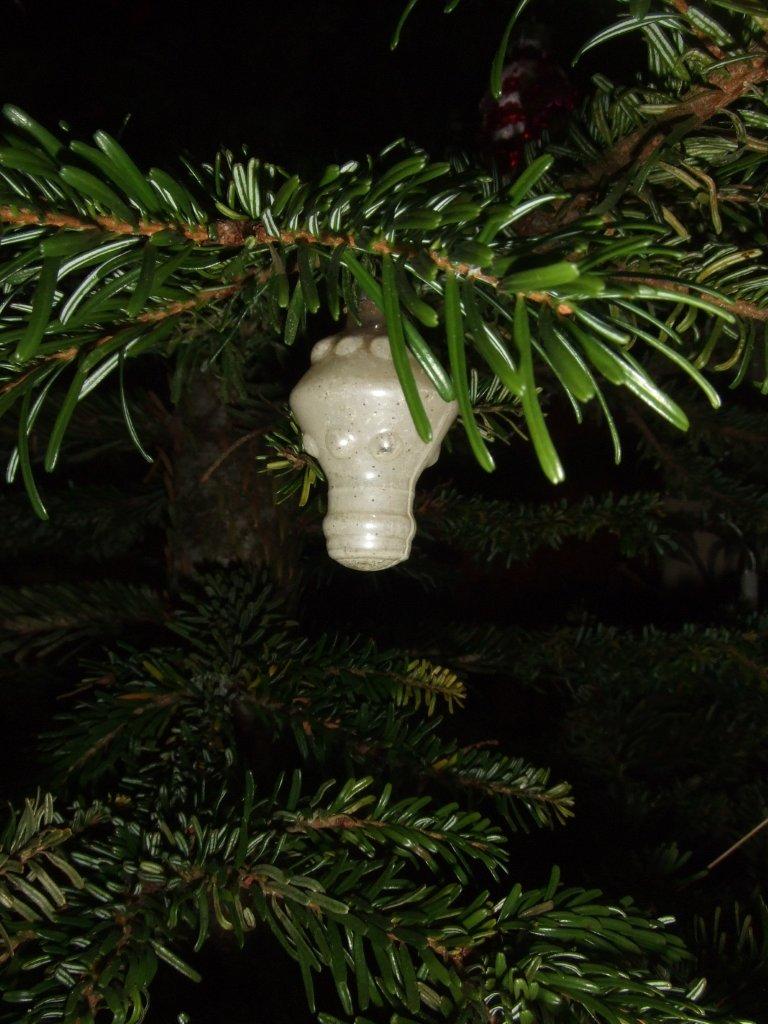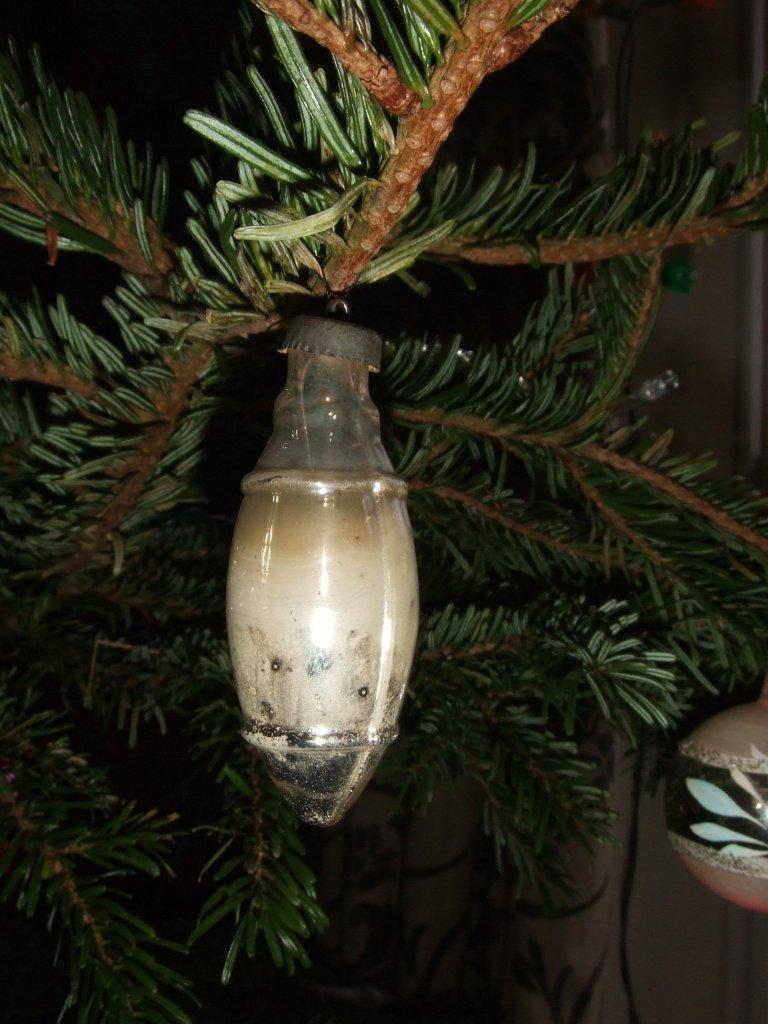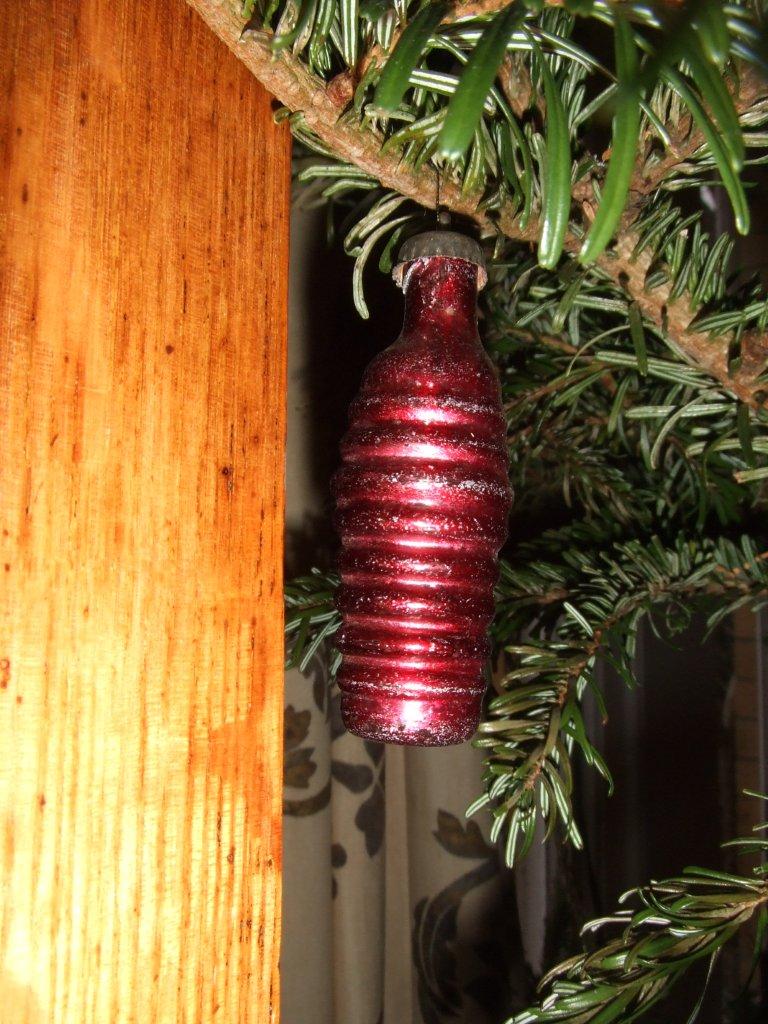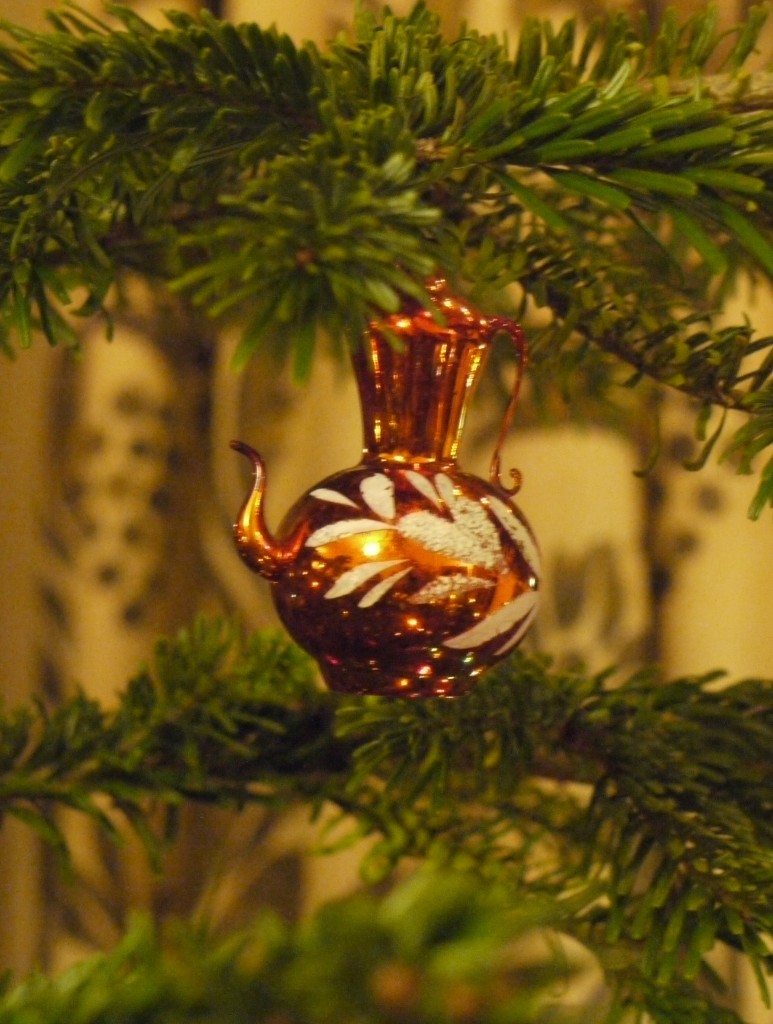by The Curious Scribbler
We took down the Christmas tree today.
It seems there is a certain amount of debate as to when you start counting the nights of Christmas and when the children were small we usually took it down on the 6th, Epiphany. No serious bad luck attended this oversight I’m glad to say. Now there is a wealth of advice on the web which explains that Twelfth Night is really the 5th of January, though an exception is often made for decorations featuring the crib, since the wise men are not scheduled to rock up until the 6th.
So the boxes are retrieved from the loft and I spend the afternoon dusting and putting away the Christmas treasures each in their own flimsy sectionalised cardboard box. For our tree represents a sixty-year accumulation of treasures: gaudy Czechoslovakian blown glass baubles, clip-on glass birds with glass fibre tails, wooden toys, metal musical instruments, American painted wood hummingbirds dangling on long white strings, glass candles, foil flowers and angels, and twisted bi-coloured metal strips which hang from the branches turning in the slightest air movement. Almost every year a box or at least a few items have been added to the tree.
This year I will show you the oldest baubles we have: five British-made Austerity baubles from 1945. My newly married parents spent the last two years of the war in the Gold Coast (now Ghana) and then moved to smoke-stained and dispirited York, a far cry from the brightly burnished tourist town of today. Burnished decorations were also in short supply, the Czech glass industry all but extinguished.
But someone in Britain had sought to fill the gap, with ornately moulded glass not seen before or since, and my mother bought a box of five. The little caps with the spring legs which slot into the neck are far solider than in normal baubles, and with an inconveniently tiny eyelet which makes them difficult to thread. And they are quite drab-coloured, rather than the familiar mirrored glass, one is misty blue, one red, one green. Their opacity resembles Roman glass retrieved from the sea. Two smaller ones are mirrored silver, probably indeed made like mirrors, and like old mirrors the silvering has slipped and tarnished. But these wartime baubles held their own as the glossier foreign goods reappeared and have always had a special place in my affections. Those who grew up reading the Tim books by Edward Ardizzone will remember when Tim went to sea and Ginger, the cabin boy, illicitly drank of the first mate’s patent hair-growing medicine. The blue bauble has always, for me, represented the flask of the dreaded hair tonic in the book. And the other baubles have ridges, grooves and ornamental bosses unlike anything which has been produced since. Neither the largest nor the brightest, these ornaments set the stage for the continuous collecting of the following years.
Czech glass appeared in glittering heaps and bins in the upstairs section of W.H.Smiths by the late 50s. I remember the year my mother bought a golden glass trumpet with the metal reed set in its flaring bell, which we were each allowed to blow, just once, before it was hung on the tree, and I remember the year I was allowed to select my own novelty bauble and I chose a copper coloured kettle with handle and spout, about two inches tall. I treasure it still.

